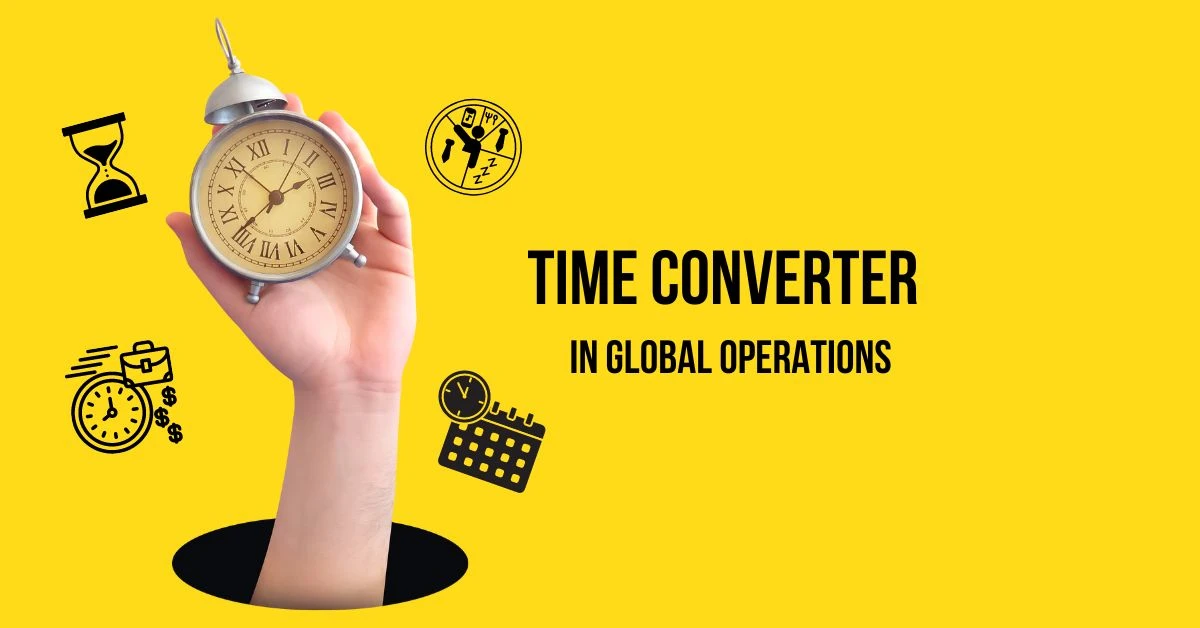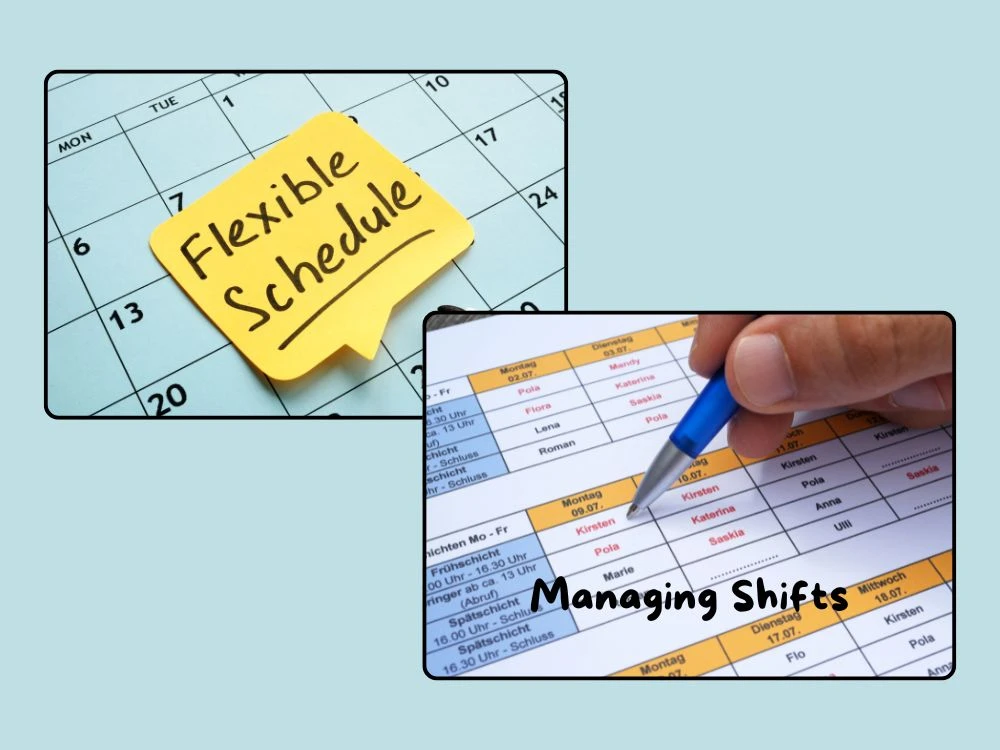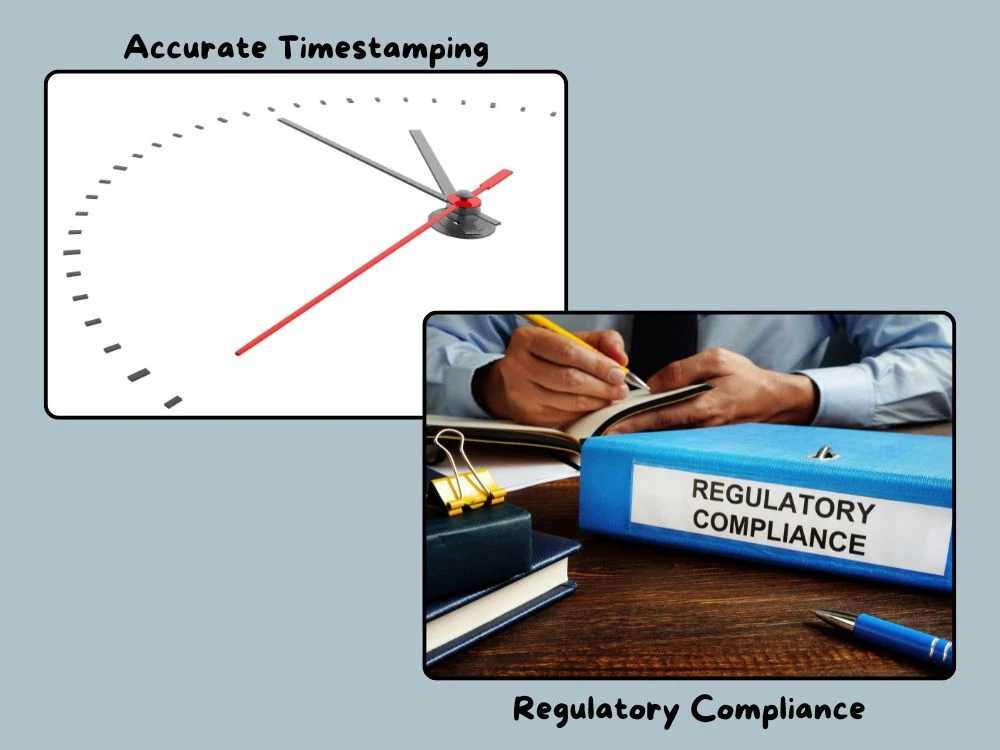
Time Converter Applications in Global Operations
Time is a precious thing in the global operations of a business. Many business organizations rely on efficient time management to improve their work processes. It is also important to meet deadlines in different business aspects.
In various business aspects, time conversion plays a significant role. Therefore, utilizing a time converter tool helps improve efficiency and productivity. In this article, we will discuss the different applications of time converters in global operations.
Key Takeaways
- Understand What a Time Converter Tool is and the Available Units.
- Learn Important Applications of Time Converter Tool in Global Operations.
Understand the Time Converter Tool
The time converter is an online tool that helps convert different time measurement units. Smart Tools AI time converter tool is useful for converting between different units. Business firms can leverage the tool to effectively perform their global operations.
Various time measurement units are available to convert such as seconds, minutes, hours, days, weeks, fortnights, months, years, decades, and so many. When performing different global operations like employee scheduling, production, logistics, and several other things, utilizing the time converter tool helps complete work on time.
Now let’s discuss some common applications of the time converter tool in the following global business operations.
01. Employee Scheduling

A. Creating Flexible Schedules
Creating flexible work schedules for employees is necessary for enhancing employee retention and productivity. It's important to consider key aspects such as employee availability, peak hours, and personal obligations. The time converter proves to be an invaluable tool that helps businesses create schedules according to employees' working hours or duration.
For example, if an employee works part-time in the morning and another part-time in the evening, the converter tool helps in efficiently managing and organizing their shifts to accommodate their availability and optimize productivity.
B. Managing Shifts Across Time Zones
Managing shifts in different time zones is an important task for businesses with globalized teams. To do this, the time converter tool is crucial which can ensure the global operation process smoother. Also, it helps managers to accurately convert and align schedules across various time zones.
For example, it helps in determining the start and end times of shifts for employees working in different parts of the world and ensures smooth workflow continuity and efficient communication among team members.
02. Manufacturing Processes

A. Scheduling Production Cycles
Scheduling production cycles is a vital aspect of manufacturing operations. It involves the necessary planning and organization of tasks and resources that are required to produce goods efficiently. So, the time converter tool functions as an invaluable asset in this process.
It assists in facilitating the scheduling of production activities across different time frames. For example, it helps determine the duration of each production phase, coordinate equipment availability, and align production schedules with demand fluctuations.
B. Coordinating Workflow
Workflow coordination is important to ensure smooth and efficient manufacturing operations. It involves properly managing the materials flow and production-related tasks and information throughout the production process. Also, it helps minimize unnecessary issues and optimize productivity.
The time converter can be an invaluable tool in this aspect which helps managers coordinate workflow activities across shifts and departments. Especially in facilities that operate 24/7 or across different time zones. By aligning schedules and synchronizing tasks, businesses can easily streamline their manufacturing workflow and enhance overall efficiency.
03. Vendor Management

A. Communication with Vendors
Business firms need to have a strong connection with their vendors who supply materials to them. To ensure a strong relationship, effective communication is necessary. Some companies source parts from different locations where the vendors’ businesses may operate in different time zones.
To enhance the communication and vendor relationship, the time converter plays an important role. It helps schedule meetings, send inquiries, and resolve problems quickly. By leveraging the time converter tool, companies can enhance their communication and collaboration with their vendors.
B. Timely Order Placements
Placing orders on time is a crucial aspect of managing inventory levels and meeting customer demands. If there are delays in placing orders or acquiring material stuff, then companies may lose a significant amount.
The time converter helps determine the optimal order placing times when vendors function across different geographical locations and time zones. It also helps in accurate lead time and order delivery (shipping) time calculation. By doing this, businesses can avoid unnecessary delays in product or materials delivery.
04. Project Management

A. Setting Milestones
In project management, setting milestones is a crucial aspect. it helps effectively break down complicated tasks into manageable segments. In this case, the time converter tool is helpful to properly schedule milestones across different time zones.
For example, it assists project managers in determining realistic milestones based on project timelines. This way they can ensure the alignment with team members' schedules irrespective of their geographical locations.
By utilizing the time converter tool, project managers can effectively plan and monitor project progress which ensures the timely completion of key milestones
B. Adhering to Deadlines
Adhering to the project deadlines is so important for the overall project success and client satisfaction. Here, the time converter is a useful tool that helps ensure meeting project deadlines. It assists project managers in coordinating essential project tasks and activities across different time zones.
For example, it helps calculate the task durations accurately by considering time zone differences. Plus, it schedules deadlines to accommodate team availability and improve workflow efficiency.
By leveraging the capabilities of the time converter tool, project managers can mitigate issues in scheduling, allocate resources efficiently, and ensure timely delivery of project outcomes.
05. Customer Support

A. 24/7 Service
Providing 24/7 customer service can help businesses fulfill their customer needs effectively. Businesses may have a global customer base and maintaining their satisfaction is crucial. So, they utilize the time converter tool to enable round-the-clock support. This is possible by helping in scheduling shifts and coordinating staffing across different time zones.
For example, the time converter tool assists in determining optimal staffing levels for each time zone. This is helpful to ensure that customers receive timely assistance and support regardless of the time of day or night.
Moreover, by leveraging the capabilities of the time converter tool, business firms can enhance customer experience and loyalty by offering continuous support and assistance.
B. Resolving Customer Issues Promptly
Quick customer problem resolution is important to enhance customer trust. It can positively enhance the customer base and brand reputation of a business. The time converter tool aids businesses in achieving this goal by facilitating efficient communication and coordination among customer support teams across diverse time zones.
For example, it is helpful to prioritize and assign customer queries to the appropriate support agents based on their availability and expertise. This way businesses can ensure that issues are addressed promptly and effectively.
Also, by leveraging the capabilities of the time converter tool, businesses can improve their customer support processes, minimize response times, and enhance customer satisfaction levels.
06. Financial Transactions

A. Accurate Timestamping
To ensure the integrity and reliability of the financial transaction, it is a must to ensure accurate timestamping. Thus, business firms use the time converter tool in this process which provides precise time measurements that enable businesses to record the exact timing of transactions with accuracy.
For example, it helps in timestamping important financial activities such as trade executions, fund transfers, and many others. This will ensure transparency and auditability in financial records.
Moreover, by leveraging the capabilities of the time converter tool, business organizations can maintain accurate transaction records, detect discrepancies, and control the risk of fraud or errors.
B. Regulatory Compliance
In financial transactions, organizations must comply with necessary regulations. Regulatory authorities impose tight rules to ensure security, transparency, and fairness in financial markets.
The time converter tool is very useful for businesses to meet mandatory regulatory obligations. They provide accurate time conversion capabilities to comply with regulatory standards and guidelines.
Conclusion
In business organizations, time conversion is a necessary task for performing various global operations. To convert time between various measurement units, the time converter is helpful and it offers accurate and swift results.
Several business functions require time conversion and they utilize the time converter tool. Effective employee work scheduling, manufacturing operation, vendor management, project management, customer support, and financial transactions are some examples of business functions that use this tool to ensure smooth functionality.
FAQ
Q1: What is the purpose of using a time converter in business?
Answer: Businesses use time converters to make sure everything runs smoothly. The tool helps with things like figuring out when employees should work, planning deliveries, keeping track of projects, and many more.
Q2: How many seconds are in a day?
Answer: 86,400 seconds. It is calculated like this: 60 seconds in a minute, and 60 minutes in an hour, so when you multiply 60 by 60, you get 3,600 seconds in an hour. A day is 24 hours and you get 86,400 seconds.
Q3: How many hours in a week?
Answer: 168 hours. As we know there are 24 hours in a day and 7 days in a week, so when you multiply 24 by 7, you get 168 hours.
Q4: How many fortnights in a year?
Answer: 26 fortnights. A fortnight is equivalent to two weeks which equals 14 days. Since there are 365 days in a year, if you divide 365 by 14 you get a total of 26 fortnights in a year,
Q5: How many milliseconds in a second?
Answer: 1,000 milliseconds in a second. It is a tiny time measurement unit that is used in micro time measurement needs.
Q6: How many nanoseconds in a second?
Answer: One billion nanoseconds in just one second. That's a lot of tiny moments ticking away.
Q7: How many decades are in a century?
Answer: In a century, there are around 10 or 11 decades, depending on how you count them. It's like saying there are about 10 or 11 sets of 10 years in a hundred years (century).
Explore Related Posts
https://smarttoolsai.com/post/how-many-hours-is-part-time
https://smarttoolsai.com/post/how-many-work-days-in-a-year
https://smarttoolsai.com/post/positive-affirmations-for-work
.webp)